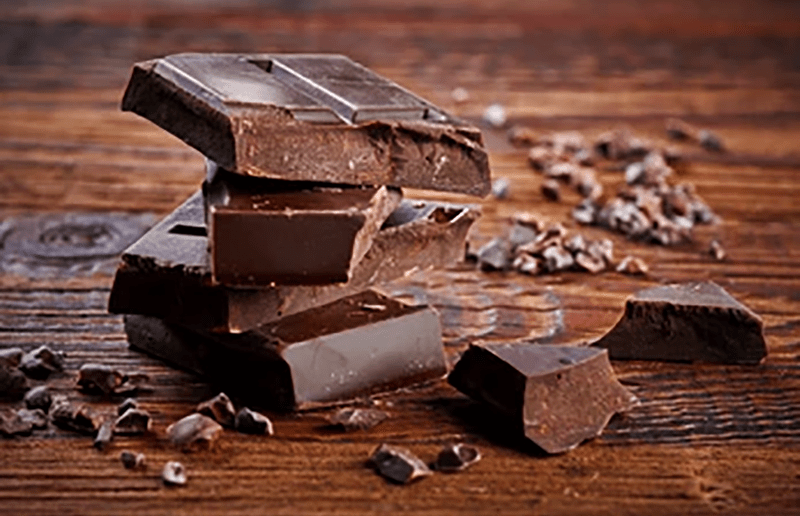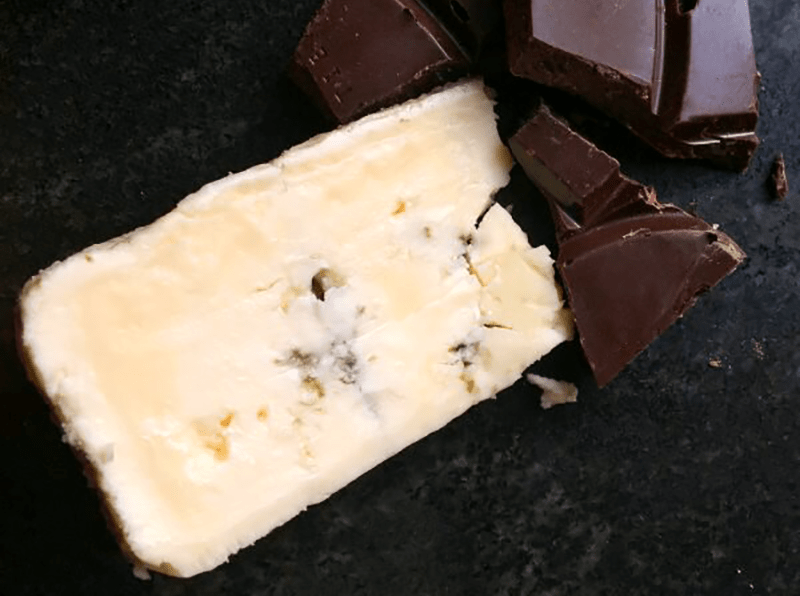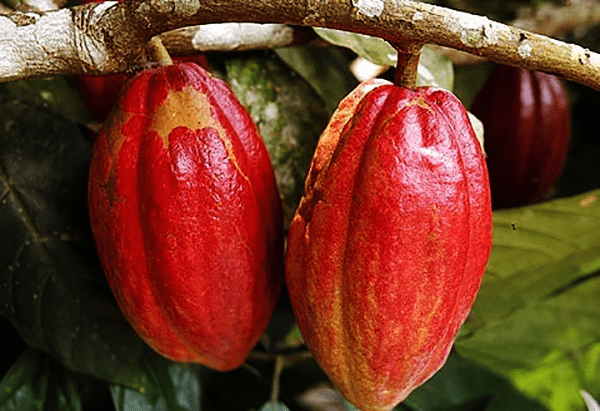How to Eat Good Quality Dark Chocolate
We here at Hello Chocolat want you to experience our Dark Chocolate to the point you get to most pleasure and enjoyment out of each bite. We feel that dark chocolate is more than just a treat; it’s an experience. When consumed properly, good quality dark chocolate offers a symphony of flavours, a smooth texture, and an array of health benefits. Whether you’re indulging in a single-origin bar or a finely crafted blend, here’s how to truly appreciate and savour dark chocolate.

1. Choosing the Right Dark Chocolate
Not all dark chocolate is created equal. High-quality dark chocolate is made with minimal ingredients, primarily cocoa mass, cocoa butter, and a small amount of sugar. Avoid chocolates with excessive additives, artificial flavours, or hydrogenated oils.
Look for a cocoa content of at least 70%—this ensures a robust flavour and maximizes health benefits.
Understanding Cocoa Content
Dark chocolate comes in different cocoa percentages, which affects its bitterness, texture, and nutritional value. While 70% cocoa content is generally recommended for a balanced experience, those new to dark chocolate may start with 60% to gradually adjust to the richer, less sweet flavours.
- 70%–75% cocoa: A good balance of sweetness and bitterness, suitable for those new to dark chocolate.
- 80%–85% cocoa: A more intense, rich experience with less sugar.
- 90% and above: Very bold, deeply bitter, and best for those accustomed to dark chocolate’s complexities.
Checking Ingredients
Always read the ingredient list.
The best dark chocolate should contain only cocoa mass (or cocoa liquor), cocoa butter, and a small amount of sugar. Some high-quality brands may add natural vanilla or a small amount of lecithin (such as sunflower lecithin) to improve texture.
Avoid chocolates with vegetable oils, artificial flavours, or high amounts of added sugar.
Single-Origin vs. Blended Chocolate
- Single-origin chocolate comes from beans sourced from a single region, highlighting unique flavour profiles influenced by the local climate and soil. For example:
- Madagascar cocoa: Fruity and bright with citrus notes.
- Ecuadorian cocoa: Floral and nutty flavours.
- Ghanaian cocoa: Strong, deep chocolate flavours with earthy undertones.
- Blended chocolate combines beans from different regions to create a balanced and consistent taste.
Fair Trade and Ethical Considerations
Sustainability and ethical sourcing matter when choosing chocolate.
As a rule of thumb, look for certifications such as Fair Trade, Rainforest Alliance, or direct trade agreements, which ensure fair wages and sustainable farming practices. Ethically sourced chocolate often has superior quality due to better farming and fermentation processes.
Texture and Appearance
High-quality dark chocolate should have a smooth, glossy finish with no visible sugar or fat bloom (a white, chalky appearance caused by improper storage or temperature fluctuations). When broken, it should produce a crisp snap—this indicates proper tempering, ensuring a smooth mouthfeel.
2. Preparing to Eat Dark Chocolate
To fully appreciate dark chocolate, consider these steps:
- Store it correctly: Keep dark chocolate at a cool, dry temperature (around 60–70°F or 15–21°C). Avoid refrigerating, as this can cause fat bloom, where cocoa butter rises to the surface, altering texture.
- Allow it to reach room temperature: Cold chocolate doesn’t release its flavours as well as chocolate at room temperature. Let it sit out for a few minutes before eating.
- Break it gently: A clean snap is a sign of well-tempered chocolate. Pay attention to the sound—good quality dark chocolate will break crisply.
3. Engaging Your Senses
Dark chocolate is best enjoyed through a mindful tasting experience. Here’s how:
- Observe the appearance: Quality dark chocolate should have a deep, uniform colour with a slight sheen.
- Feel the texture: It should be smooth and free of graininess or sugar bloom.
- Inhale the aroma: Before tasting, take a deep breath in through your nose. You may detect notes of fruit, nuts, coffee, or floral undertones.
- Taste slowly: Place a piece on your tongue and let it melt naturally. Chewing too quickly releases only surface flavours; allowing it to dissolve unlocks deeper notes and subtleties.

4. Pairing Dark Chocolate for Enhanced Flavour
Dark chocolate pairs beautifully with a range of foods and drinks that complement its complex flavours:
- Nuts: Almonds, hazelnuts, and walnuts enhance the nutty undertones.
- Fruits: Berries, oranges, and bananas contrast well with dark chocolate’s bitterness.
- Cheese: Aged cheeses like Gouda or blue cheese provide an interesting balance.
- Wine & Spirits: Red wines (Cabernet Sauvignon, Zinfandel) and whiskeys enhance the depth of flavour.
- Coffee & Tea: A well-brewed espresso or an earthy black tea pairs exquisitely with dark chocolate’s bitterness.
5. Eating Dark Chocolate as an Appetite Suppressant
One lesser-known benefit of dark chocolate is its ability to act as a natural appetite suppressant. Due to its rich content of fibre and healthy fats, dark chocolate promotes satiety and helps curb cravings. Research has shown that dark chocolate can reduce levels of ghrelin, a hormone that stimulates hunger, while also enhancing feelings of fullness (Massolt et al., 2010).
In addition, dark chocolate’s bitterness can slow down the desire for excessively sweet foods, making it a good choice for those looking to control sugar intake. Consuming a small portion of dark chocolate before meals may help moderate portion sizes and reduce overall calorie consumption.
6. How Much Dark Chocolate Should You Eat?
While dark chocolate has numerous health benefits, moderation is key. A small serving of about 1–1.5 ounces (28–40 grams) per day is sufficient to enjoy its benefits without over-consuming calories or sugar.

7. Enjoying the Ritual
Eating dark chocolate should be a moment of pleasure and mindfulness. Instead of mindlessly snacking, take a moment to slow down, focus on the flavours, and truly savour each bite. Whether enjoyed alone, shared with a friend, or paired with a favourite drink, dark chocolate is best appreciated as a deliberate indulgence.
Final Thoughts
Dark chocolate is a versatile and deeply satisfying food when eaten properly. By selecting high-quality chocolate, storing it well, and taking the time to savour its flavours, you can turn each bite into a luxurious experience. Additionally, its appetite-suppressing properties make it a guilt-free pleasure for those seeking balance in their diet. Next time you unwrap a piece of dark chocolate, take the time to appreciate the artistry, depth, and rich history contained within.
References
- Massolt, E. T., van Haard, P. M. M., Rehfeld, J. F., Postema, P. R., van der Veer, E., Pijl, H., & van der Lely, A. J. (2010). Appetite suppression through smelling of dark chocolate. Neuroendocrinology Letters, 31(6), 729–733.
